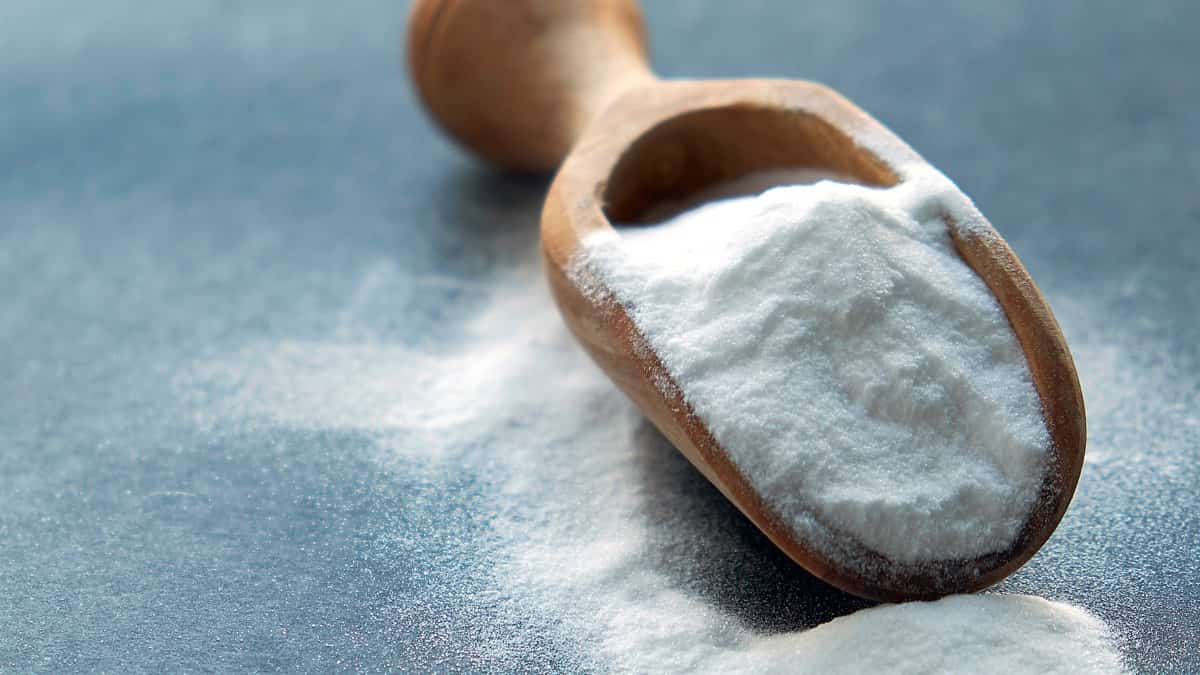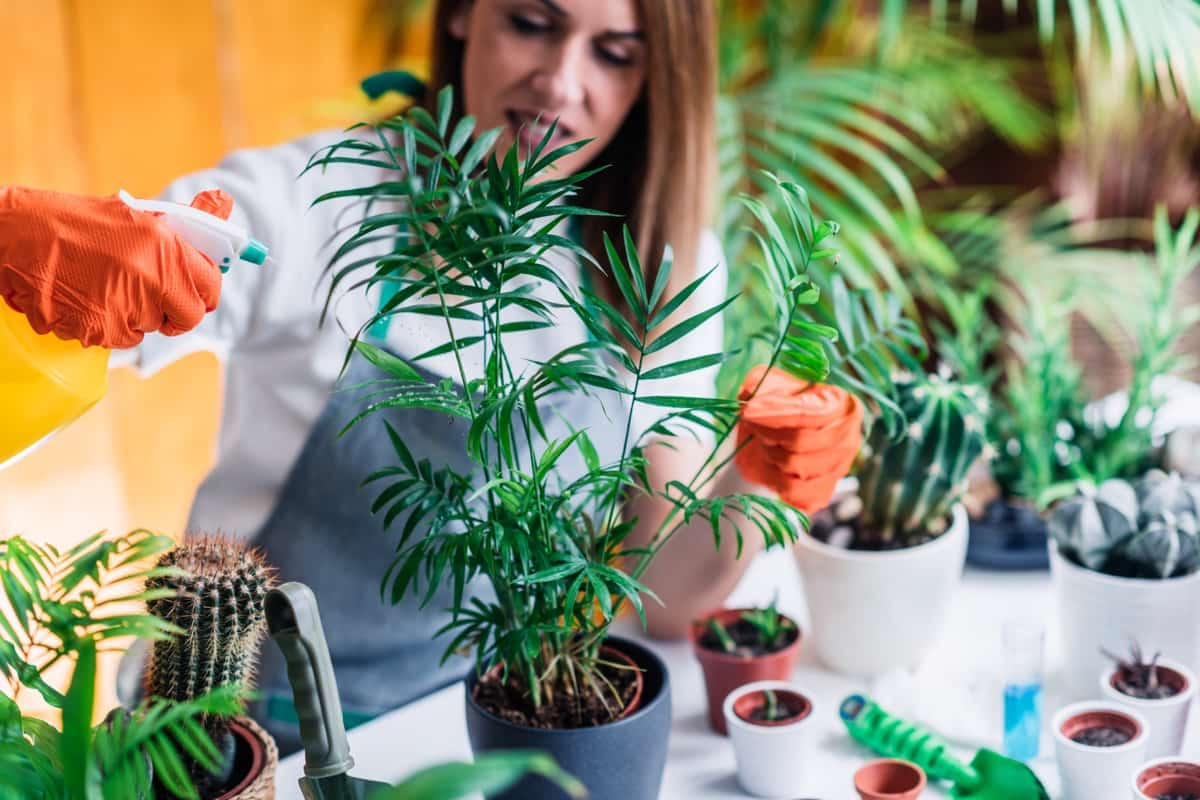A healthy, vibrant garden is every gardener’s delight. But every plant lover knows the challenges that pests and diseases can bring. Over-the-counter pesticides and fungicides can combat these issues and introduce harmful chemicals into the environment. So, what’s the solution? Enter baking soda. This versatile and non-toxic compound can be a formidable ally in maintaining your garden’s health.

A simple baking soda solution can offer a range of benefits, from acting as a pesticide and fungicide to improving your plants’ overall health. This comprehensive guide will discuss how to create and use a baking soda solution, its effectiveness, and the precautions to take while using it.
Homemade DIY Baking Soda Solution for Pests and Disease Control
What is Baking Soda Solution?
Baking soda, known as sodium bicarbonate, is a white, crystalline powder commonly used in cooking for its leavening properties. But did you know this common kitchen ingredient is also an effective pesticide and fungicide? The baking soda solution, a mix of baking soda and water, has been used by gardeners and farmers for many years as a simple, cost-effective, and environmentally friendly way to protect plants from pests and diseases.
What Are the Ingredients Needed to Make Baking Soda Solution?
Creating a baking soda pesticide is simple and requires readily available ingredients. The primary ones include baking soda and water. Other natural ingredients can be added, such as vinegar or neem oil, for a more potent solution. Let’s explore these ingredients and their roles in a baking soda pesticide recipe:
- Baking Soda: The main ingredient in the solution, baking soda, is an effective fungicide and pesticide.
- Water: Used as a medium to dilute baking soda, ensuring it is safe for plants.
- Vinegar: Acetic acid in vinegar enhances the pesticidal properties of the solution, making it a great addition to a baking soda and vinegar pesticide.
- Neem Oil: Neem tree seeds yield superb organic pesticide oil. A neem oil and baking soda pesticide is a formidable solution against various pests.
Recipe/Prepare Baking Soda Solution at Home
- Take one quart of water in a spray bottle.
- Include a tablespoon of baking soda.
- Shake the bottle until all the baking soda is fully dissolved.
- Add one teaspoon of vinegar or a few drops of neem oil for a more potent solution. Remember to shake the solution well before each use.
How Does Baking Soda Solution Work?
The baking soda solution works due to the bicarbonate ion present in baking soda. This ion interferes with the metabolic processes of certain pests and pathogens, making the environment inhospitable for them. The presence of vinegar or neem oil enhances the solution’s effectiveness, as vinegar’s acetic acid and neem oil’s azadirachtin provide additional pest and pathogen control.
What Pests and Diseases Can Baking Soda Solution Control?
The baking soda solution is effective against various garden pests and diseases. It can help control powdery mildew, black spot on roses, and various fungal diseases. As a baking soda pesticide and fungicide spray, it can deter aphids, whiteflies, and other small pests. A neem oil and baking soda pesticide is also incredibly potent against more resilient pests and diseases.
In case you missed it: Homemade DIY Compost Tea Soil Fertilizer: Recipe for Natural and Organic Benefits of Plants

How to Store Baking Soda Solution?
Storing the baking soda solution is simple. Keep it in a cool, dark place, like a pantry or cupboard, to prevent the degradation of its pesticidal properties. Using a spray bottle that seals tightly is also important to prevent evaporation or contamination. If you added neem oil or vinegar, use the solution within a week for the best results.
How Often Should You Use Baking Soda Solution for Your Plants?
How often you should use a baking soda spray for plants depends on the severity of the pest or disease problem. As a preventive measure, spraying once a week is sufficient. If your garden has a significant pest or disease infestation, you may need to spray every few days. Remember, moderation is key. Excessive use of baking soda can lead to a buildup of salts that could harm your plants.
Best Time to Apply and How Much Baking Soda Solution Should You Use For Your Garden Plants?
The best time to apply the baking soda solution is early morning or late evening when the sun is not at its peak. Direct sunlight can cause the solution to evaporate quickly, reducing its effectiveness. Regarding the quantity, it’s best to lightly mist the plants, ensuring all surfaces, including the undersides of leaves, are coated. A good rule of thumb is to use one quart of solution for each small tree or five shrubs.
How Long Does It Take for Baking Soda Solution to Work for Your Plants?
The effect of a baking soda solution can be seen within a few days of application. However, for severe infestations, it may take a few weeks of consistent application for the baking soda pesticide removal to be completely effective. It’s crucial to be patient and consistent in your application for the best results.
Benefits of Plants of Using Baking Soda Solution in the Home Garden
Using a baking soda solution in the home garden has several benefits. First, it’s inexpensive and easy to make. It’s also eco-friendly, unlike many commercial pesticides that contain harmful chemicals. The baking soda solution helps control various pests and diseases, ensuring healthy plant growth. And lastly, because it’s natural, it’s safe for beneficial garden insects and the overall ecosystem.
Safety Precautions When Using Baking Soda Solution
- Do not ingest the solution: Even though the ingredients are edible, the solution is not intended for consumption.
- Avoid contact with eyes: If the solution gets into your eyes, rinse immediately with plenty of water.
- Use in moderation: Overuse of baking soda solution can lead to salt buildup, damaging plants.
| Ingredients Needed to Make Baking Soda Solution | |
| Baking Soda | The primary ingredient acts as an effective fungicide and pesticide. |
| Water | Acts as a medium to dilute the baking soda, making it safe for plants. |
| Vinegar | Optional ingredient. Enhances the solution’s pesticidal properties. |
| Neem Oil | Optional ingredient. Acts as an excellent organic pesticide. |
Understanding the Limitations and Alternatives of Baking Soda Solution
Even though the baking soda solution is a fantastic tool for gardeners, it’s important to remember that it is not a cure-all for every plant issue. Its effectiveness depends on the types of pests and diseases affecting your garden. Some hardier pests and more severe diseases might not respond effectively to baking soda solution alone. Additionally, over-reliance on baking soda can lead to sodium buildup in the soil, which could harm certain plants over time.
In case you missed it: Homemade DIY Onion Spray for Pests and Diseases Control: Recipe for Natural and Organic Benefits of Plants

In such cases, exploring other natural alternatives or considering a balanced approach combining baking soda solutions with other organic pest control methods may be necessary. For instance, companion planting, introducing beneficial insects, or using other natural remedies like essential oil sprays can complement the use of baking soda solution, creating a more comprehensive, sustainable, and organic pest management system for your garden.
- Feed Your Flock for Less: Top 10 Tips to Save on Chicken Feed
- Ultimate Guide to Ossabaw Island Hog: Breeding, Raising, Diet, and Care
- Hatching Answers: The Top 10 Reasons Your Chickens Aren’t Laying Eggs
- Eggs and Economics: Breaking Down the Cost of Raising Backyard Chickens
- Defend Your Greens: Proven Methods to Keep Iguanas Out of Your Garden
- Ultimate Guide to Cinnamon Queen Chicken: A Comprehensive Guide for Beginners
- Ultimate Guide to California Tan Chicken: Breeding, Raising, Diet, Egg-Production and Care
- Ultimate Guide to Marsh Daisy Chicken: Breeding, Raising, Diet, and Care
- 10 Types of Chicken Farming Businesses You Can Start for Profits